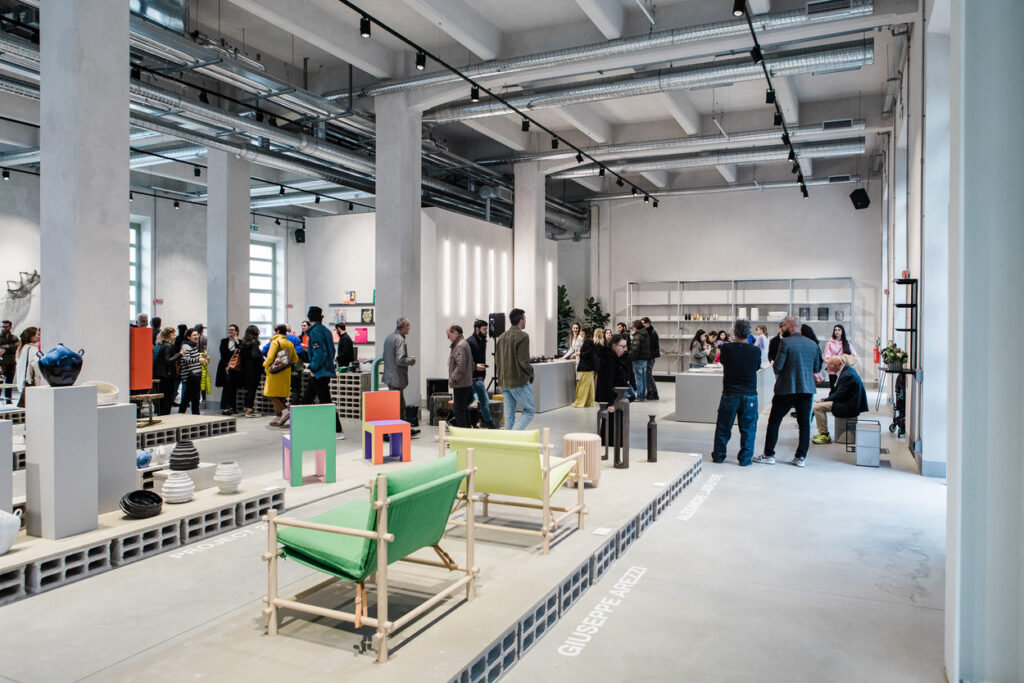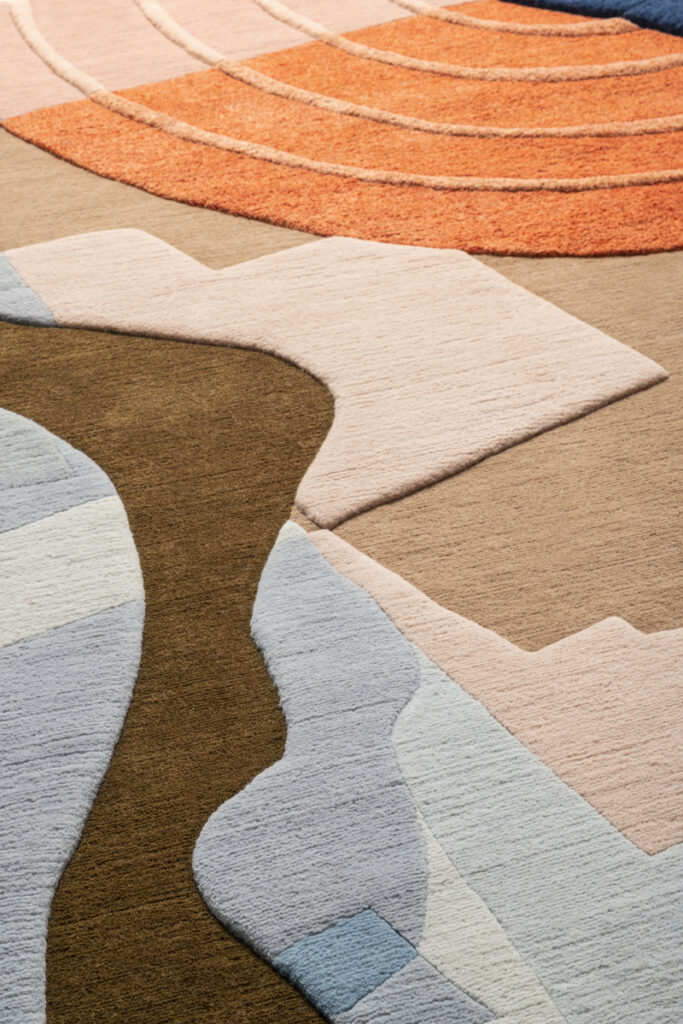A work that breaks away from its primary function, blurring the boundary between functional object and sculpture. (Italy)

THE ZOO
Roberto Sironi is one of the 13 designers selected for ZOO’s inaugural temporary exhibition.
ZOO _Hub spaces are concept stores and galleries, serving as a global showcase capable of narrating untold stories. Periodically, the ZOO team will curate exhibitions and collectives that traverse the broad discourse surrounding contemporary design.
Antropico Entropico
Wool, bamboo silk, and hemp
The planet’s surface is detected by satellites that travel 600 kilometers high above the earth and to which it takes about two days to cover the entire earth’s surface, immortalizing even details up to the size of about ten centimeters. Visualization software such as Google Earth integrates the images produced by the different satellites allowing the bird’s-eye observation of the terrestrial landscape, from which an extensive anthropization of ecosystems emerges as a constant.



Unnatural geometries with synthetic colors, artificial borders that clearly dissect natural landscapes, rivers that disappear in huge dams and forests consumed by cultivated fields draw the anthropic landscape, mixing natural and artificial elements.
Antropico Entropico is a triptych of carpets that interprets the graphic elements extrapolated from satellite images, which are decomposed and reassembled according to an entropic, disordered principle. This action of deconstruction and reworking generates a new landscape – imaginary and therefore counterfeit – a textile papier collé, a collage of overlapping elements in which colors and shapes mix by stratifying, creating three-dimensional landscapes, impossible islands, cartographic visions.
Each carpet is produced in only 3 pieces.

Who is Roberto Sironi
Roberto Sironi (1983) is an Italian designer, who lives and works in Milan. His design practice is defined by a research-based and process-oriented approach, where thinking and making converge in the creation of artifacts, which are considered narrative tools to trigger a dialogue with the user.
This approach materializes through a body of work that breaks with the primary function by blurring the boundary between functional object and sculpture; the artifacts produced are the result of a process in which the subjects addressed are investigated through an
in-depth analysis from a historical, geographical and anthropological point of view. The works are conceived as contemporary ultra-signs, where the transformation processes re-signify the matter, revealing its unseen qualities and giving it new features.


